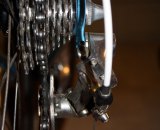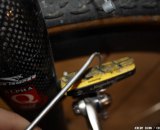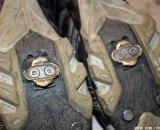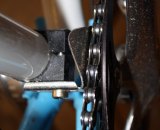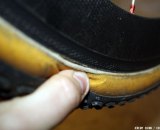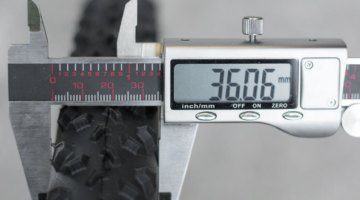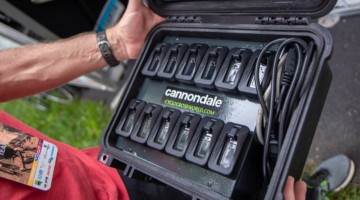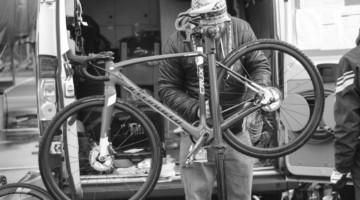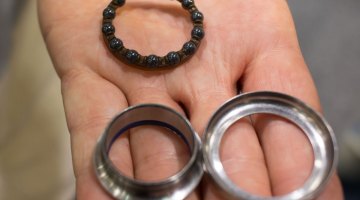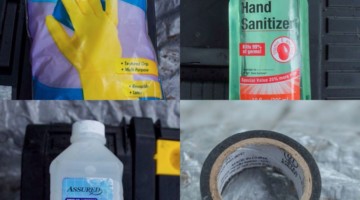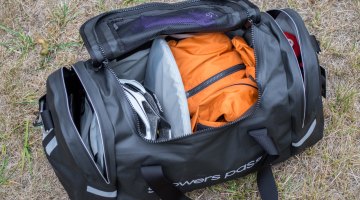Before you can go out and preview a course at any given race, you should be “previewing” your bike for the weekend, making sure everything is as it should be. Mechanic Jeremy Chinn tells us how.
by Jeremy Chinn
A few weeks ago, our intrepid online editor at Cyclocross Magazine sent out a request to have some thoughts on race-day mechanics in the pit. I thought for a while and tried to come up with something appropriate for the discussion. Unfortunately, the thing that kept sticking in my head was that all the turning of wrenches should happen well before the event! Cleaning bikes between laps and swapping wheels for flats is one thing, but if you are pulling out the wrenches on race day, the race day is already lost for your rider or yourself!
That thought stayed in my mind as I prepared for this past weekend’s worth of racing. This was a two-day race I’d been looking forward to as it is only minutes from my home and on a course I regularly train on. Following our Wednesday night training race, I did a once over on the bike and found a cut in the casing of my rear Grifo! The pink latex tube looked like a little bubblegum bubble sticking through the casing.
Had I not found that cut before race day, I’m sure that tire would not have made it through the first lap of day one. That would have been an entry fee and wife-issued ‘hall pass’ thrown right down the drain. Having a spare set of wheels came to the rescue and I was able to race this weekend with not a single issue – excepting a substantial lack of fitness. My pre-inspection saved my weekend and helped make it a relative success.
Even if you are not mechanically inclined, you can up the chances of making your weekend a success by doing a good pre-race inspection of your gear. Below is the list I’ve followed since the mid-nineties when I first started “wrenching” race bikes for myself and others.
Cockpit –
Saddle – Check the rails and the seatpost clamp for cracks- bad remounts put a lot of stress here.
Handlebars/Levers – check the stem clamps to make sure they’re not cracked, and tug on your Brake/Shifters to ensure they’re tight. Does the bar wrap slide around under your hands?
Pedals – SPD and Crank Bros cleats in particular wear out and their performance gets worse as they wear. Keep a spare set around for replacement when necessary.
Frame – Check the frame over as you wash it after your last race. Look for cracks in the clearcoat/paint. If you find something bad, take it to your LBS [local bike shop] to see what the story is.
Drivetrain –
Chain – A chain checker will save you a lot of money in the long run. Replace that chain regularly. Good cyclocross courses eat chains for breakfast. If you use a chain-keeper, make sure its still aligned right.
Cassette and Rings- Look for bent teeth and wear. If you replace your chain, ride the bike under power to see if the cassette is too worn to work with the new chain.
Shifting– Check the shift cables where they are pinched by the derailleur pinch bolt. Fraying here will make shifts sluggish or impossible. Any sign of cable drag means a cable (and possibly housing) replacement is in order. Check that your derailleur hanger is straight while you’re at it. You do have a spare hanger for that carbon frame, don’t you?
Braking – Check the pads to make sure they’re not too worn. This is especially true if riding carbon wheels! Also check that the lever engagement is still as tight as you want it!
Wheels – Those with disc brakes don’t have as much worry as their cantilever brothers, but all wheels should be checked for trueness. Spin each wheel in the bike and look at the clearance to the brake pads: the clearance should stay even as the wheel goes around.
Tires – For clinchers, check for cuts in the casing. For tubulars, check for cuts in the casing and then deflate the tire to 10PSI and push against the sidewall looking for loose spots. As tubulars age, they will also often develop a worn area near the edge of the base tape.
Now that you know what to look for, when should you do it? During the race season, I like to give the bikes a once over as I clean them up after the race weekend. This gives you enough time to do a lot of things – get parts for a fix, take it to your local shop, or even glue a new tubular. Waiting until the last minute won’t allow many or any of those things.
We’ve all seen a friend or competitor walk their bike through the course to the pit because of a mechanical issue or flat. The list above can be done in five or ten minutes when you are used to it. A pre-race inspection will ensure that your friends won’t see you walking your bike to pit lane!
Jeremy Chinn is a cyclocross and mountain bike racer from the Memphis TN area and a former shop and race team mechanic. Jeremy currently races and wrenches for the Journeyman Racing Team.













